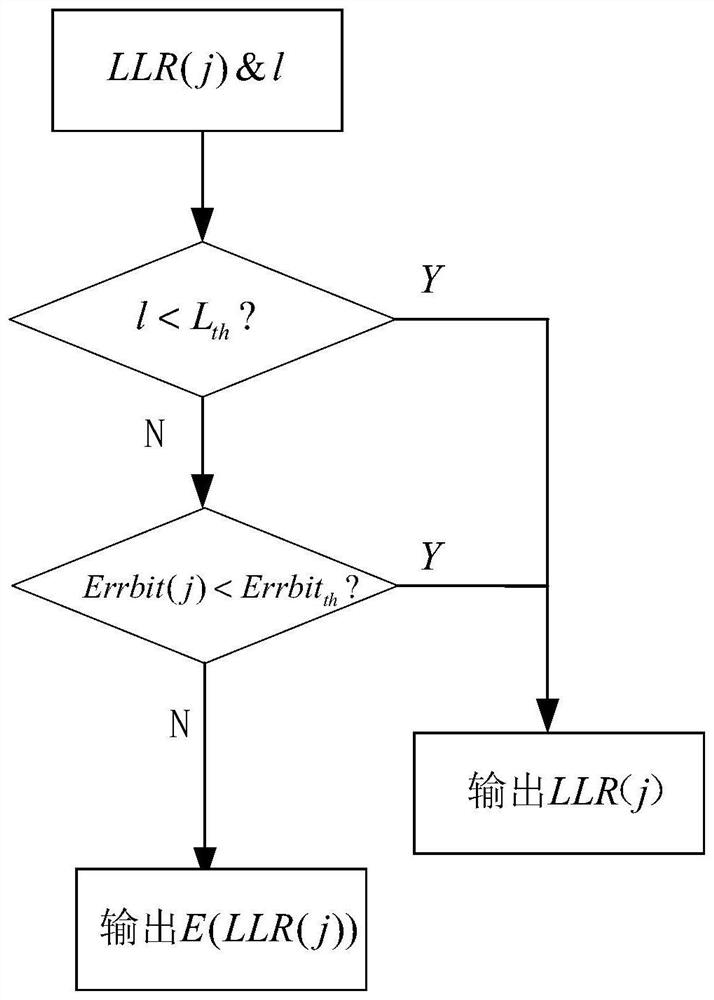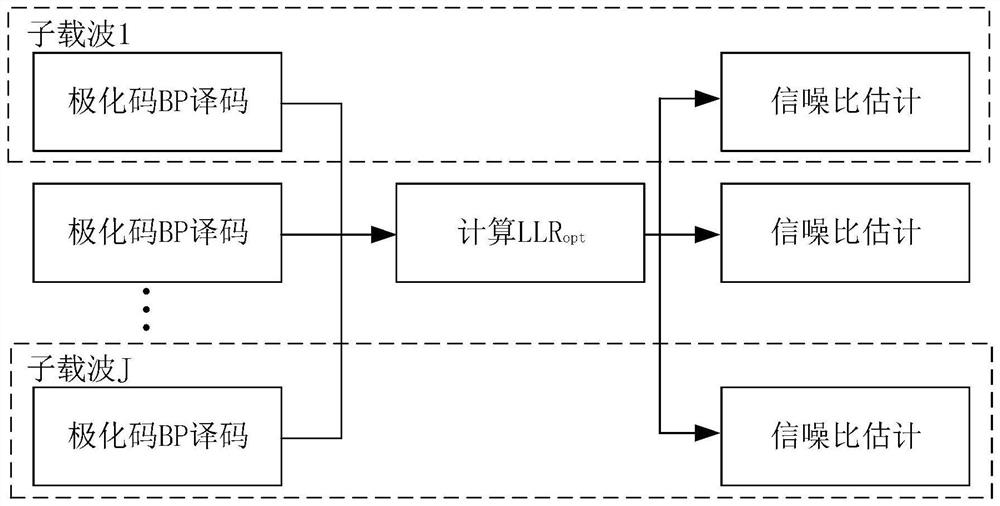Multi-carrier combined signal-to-noise ratio estimation method, carrier combination method and communication system
A signal-to-noise ratio estimation, multi-carrier technology, applied in the field of low-orbit satellite communications, can solve the problems of low signal-to-noise ratio of sub-carrier signals, poor signal-to-noise ratio estimation performance, significant Doppler effect, etc., and achieve the effect of reliable expected value.
- Summary
- Abstract
- Description
- Claims
- Application Information
AI Technical Summary
Problems solved by technology
Method used
Image
Examples
Embodiment 1
[0057] Embodiment 1: A multi-carrier joint signal-to-noise ratio estimation method. Decoding soft information is selected as the reference condition for signal-to-noise ratio estimation. A joint signal-to-noise ratio estimate is obtained.
Embodiment 2
[0058] Embodiment 2: on the basis of embodiment 1, including sub-steps:
[0059] S1, demodulate and decode each sub-carrier respectively, and use the obtained maximum likelihood ratio of each symbol output by polar code decoding as decoding soft information;
[0060] S2, combine and combine the decoded soft information obtained from each channel, and then jointly use the symbol information on each subcarrier to jointly estimate the signal-to-noise ratio of the subcarrier signal.
Embodiment 3
[0061] Embodiment 3: On the basis of Embodiment 2, in step S1, including sub-steps:
[0062] The polar code decoder uses the BP algorithm for iterative decoding. When the number of decoding iterations is 1, the decoding result C is checked by j Check the product of the check matrix H of the polar code itself; the algorithm is Errbit(j)=Σmod(C j ·H T ,2), H T Represents the transposition of H, and the number of error code words Errbit(j) is used as a measure of the error code words generated in the polar code decoding process. The larger Errbit(j), the more unreliable the result of the polar code BP decoding algorithm. , the decoding soft information of each symbol corresponding to the output is also more inaccurate. When Errbit(j) is 0, it is considered that there is no error in the BP decoding algorithm, and the corresponding decoding soft information is very accurate. The decoded soft information on each subcarrier is denoted LLR(j).
PUM
 Login to View More
Login to View More Abstract
Description
Claims
Application Information
 Login to View More
Login to View More - R&D
- Intellectual Property
- Life Sciences
- Materials
- Tech Scout
- Unparalleled Data Quality
- Higher Quality Content
- 60% Fewer Hallucinations
Browse by: Latest US Patents, China's latest patents, Technical Efficacy Thesaurus, Application Domain, Technology Topic, Popular Technical Reports.
© 2025 PatSnap. All rights reserved.Legal|Privacy policy|Modern Slavery Act Transparency Statement|Sitemap|About US| Contact US: help@patsnap.com



